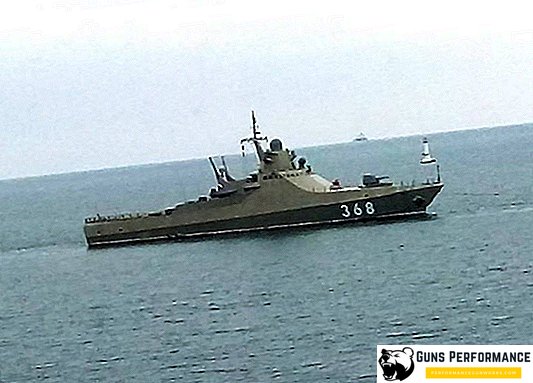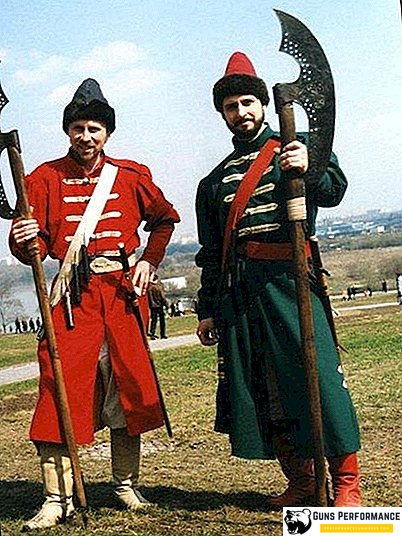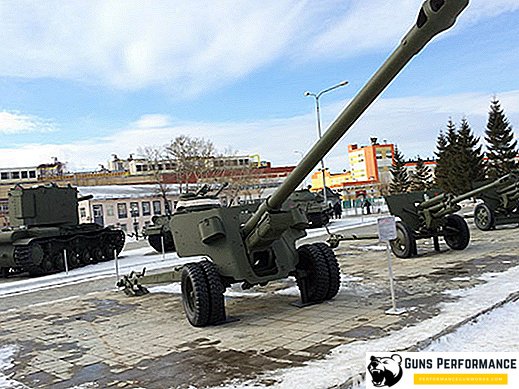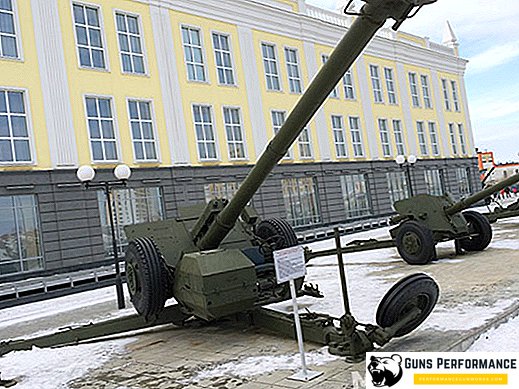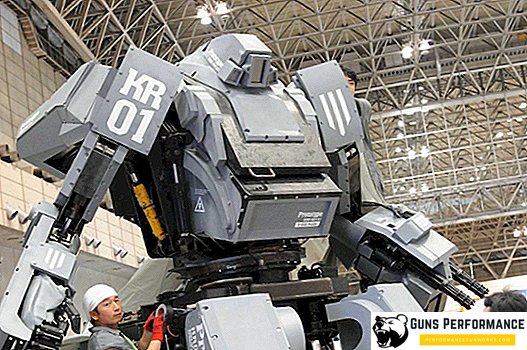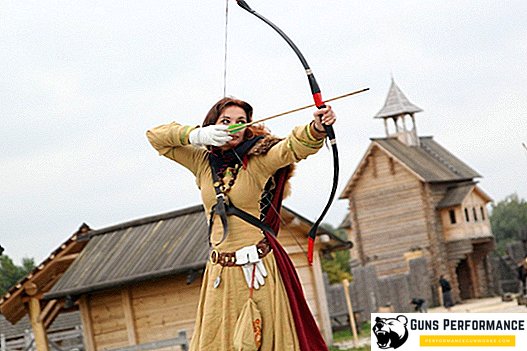
The 2C3 "Akatsiya" is a 152 mm self-propelled howitzer of 152 mm caliber, developed in the USSR in the late 60s. However, despite the rather old age, "Acacia" is still in service with the Russian army.
The ACS "Acacia" is intended for the destruction of enemy manpower and armored vehicles, its command and control units, and the suppression of the enemy’s artillery and mortar batteries. The firing range of the installation reaches 20.5 km.
2S3 "Acacia" was put into service in 1971, mass production was deployed at the Ural Transport Engineering Plant (UZTM). It stopped almost immediately after the collapse of the USSR, in 1993. In total, about 4 thousand units of this self-propelled unit were produced. Over the years of its operation, ACS Acacia has been modernized several times.
This self-propelled unit took part in a variety of wars and conflicts, having established itself as a reliable and effective weapon. It was supplied to all the armies of the Warsaw Pact states, as well as to countries in Africa and Asia. In addition to the Russian army, 2S3 "Akatsiya" is currently in service with several dozen armies in the world.

History of creation
After the end of World War II, the USSR was armed with several self-propelled artillery systems. These were assault and anti-tank self-propelled guns designed for direct fire. It should be noted that a similar situation was observed in the armies of other countries. There were other types of self-propelled guns capable of striking the enemy from closed positions, but there were relatively few of them.
However, the advantages of self-propelled artillery compared to towed ones were obvious, therefore, the development of new self-propelled guns was actively pursued in many countries around the world. Similar constructions were done by Soviet designers, but after Nikita Khrushchev came to power, all work in this direction was suspended.
Khrushchev believed that the future was for rockets, and in the case of a large-scale nuclear war, guns would not be needed at all. However, very soon the fallacy of this position became clear. Several local conflicts of the 50s and 60s showed that cannons remain the main means of defeating the enemy, and artillery is still the "god of war."
However, work on new domestic artillery systems began only after Khrushchev resigned as head of state.
July 4, 1967 saw the light of a truly historic for the Soviet artillery decree of the Council of Ministers, which gave rise to work on the ACS "Gvozdika", "Acacia" and "Violet". It should be said that at this time the United States was already armed with a 155-mm self-propelled howitzer M109, capable of firing ammunition with a nuclear warhead, so that the Soviet designers were in the role of catch-up.
Before the start of the design work, the experience of using ACS during the past war was thoroughly analyzed, and the latest trends in the development of this type of weapon were also taken into account.
VNII-100 from 1963 to 1965 conducted preliminary research on the appearance and design of the future self-propelled unit. It was decided to develop the artillery part of the future ACS on the basis of the towed 152-mm howitzer D-20. The design of the gun, ballistics and ammunition of this gun were taken without changes.
Regarding the chassis of the future self-propelled guns, two options were considered: "Object 124" (PU Krug "Krug") and the chassis of the promising medium tank "Object 432". In the course of the survey, it was found that the front-engine layout would be more suitable for the ACS, therefore, for the future Acacia, it was decided to use the Krug AD-1 landing gear chassis.
Two prototypes were made already in 1968, in 1969, factory tests began, which showed excessive gas concentration of the fighting compartment during the shooting. They managed to cope with this problem, and in 1971 the new ACS was put into service under the designation 2С3 “Akatsiya”. Serial production of the self-propelled unit was deployed at UZTM as early as 1970 (that is, before it was put into service), it began to enter the artillery regiments of motorized rifle and tank units to replace the 152-mm howitzers D-1, D-20 and ML-20 .
In the same period, work was under way to create a 152-mm howitzer with a cap-head charging. However, studies have shown that the use of a cap charge does not have any advantages in accuracy, or in the firing range, or in the rate of fire of the gun, therefore, further developments in this direction were considered impractical.
In the early 70s, the ACS 2S3 Acacia was upgraded, first of all it affected the design of the loading mechanism and the layout of the fighting compartment of the vehicle. Two drum-type stowers on the base version were replaced with one, which made it possible to increase the unit's ammunition to 46 shots. The arrangement of hatches in the aft part and the turret of the self-propelled unit was also changed, and the mechanized supply of shots from the ground was installed. In addition, a new radio station was installed on the ACS. Upgraded "Acacia" received an index of 2S3M. In the series, it was launched in 1975.
In 1987, another modification of the ACS was developed, it received the name 2S3M1. This machine was installed panoramic sight gunner 1P5, new intercom equipment, as well as a more advanced radio station. In addition, the self-propelled gun was equipped with equipment for receiving information from the machine commander of the battery.
The next modernization of the "Acacia" was carried out after the collapse of the USSR, it received the name 2S3M2. The self-propelled gun received an automated control system for guided and fired by the 1B514-1 Mekhanizator-M, as well as a new smoke screen system. At the same time, the ACS 2S3M2 “Acacia” version was developed for the NATO caliber.
The last modernization of the machine touched the artillery part of the installation. The 152-mm howitzer 2A33 was replaced with a more powerful 2A33M cannon of the same caliber, which increased the firing range and significantly expanded the range of used ammunition. The installation was also equipped with more advanced onboard equipment. This modification received the name 2S3M3, while it is considered an experimental machine.

Description of construction
SAU 2S3 "Akatsiya" has a classic tower circuit with the engine in front of the machine. The hull and self-propelled tower are made of rolled armored steel, it holds an armor-piercing bullet at a distance of 300 meters, and also protects the crew from fragments of mines and shells. The frontal armor of the turret and the hull is 30 mm thick, and the armor of the side parts is 15 mm.
The installation case is divided into several compartments: control, power and combat compartment. Control compartment is located in the front of the case on the left side. It is the driver's seat, instruments and controls. Right in front of the power section is located, in which the engine, transmission, as well as lubrication systems, cooling, starting and fuel supply.
The central and aft part of the vehicle is occupied by the fighting compartment, a welded turret with a 152-mm gun is installed on its roof. In the fighting compartment are located the three crew members: the commander of the car, the gunner and loader. The seats of the commander and gunner are to the left of the gun, and the loader is to the right of it. Place the commander of the installation is equipped with a rotary turret, which is installed on the roof of the tower. Also on the roof of the tower is the commander's hatch and loader hatch. A 7.62-mm machine gun is mounted above the commander's hatch for firing at air targets. The striker is located in the stern of the combat compartment.
The ACS 2S3 "Acacia" is armed with a 152-mm howitzer 2A33, which almost completely repeats the D-20 towed howitzer. It consists of a barrel, bolt, clutch, wheel chock, muzzle brake, cradle and lifting mechanism. The barrel of the 2A33 is a pipe connected by a coupling with a breech, on the muzzle of the trunk there is a muzzle brake. The gun's shutter is a vertical wedge, the shot can be made both manually and by means of an electric trigger. The recoil cylinders roll back after the shot along with the barrel.
The loading of the gun is a separate cartridge case: first, a projectile is sent to the barrel bore, and then the gunpowder case. Most of the 152 mm caliber artillery systems are similarly structured.
To facilitate the work of the loading instrument, it is equipped with an electromechanical projectile and charge collector, as well as a tray to catch the spent cartridge case. An anti-recoil device is a hydraulic recoil brake attached to the breech and a pneumatic knurled valve filled with nitrogen.

The lifting mechanism provides vertical guidance of the gun in the range from −4 to + 60 °.
The ammunition of the Acacia self-propelled gun is 40 shots (for the 2S3 modification), the number of shots on the later installation modifications is increased.
SAU "Akatsiya" can fire different types of ammunition. The main ammunition of the self-propelled gun includes high-explosive fragmentation projectiles (firing range of more than 17 km), projectiles with improved aerodynamic shape, the firing range of which is 17.4 km, it is possible to use guided projectiles such as Krasnopol and Centimeter. In addition, self-propelled guns can fire chemical, lighting, shrapnel and cluster munitions. To combat the enemy's armored vehicles, cumulative and armor-piercing shells are used.
ACS 2S3 "Akatsiya" can use a munition with a nuclear warhead of 1 kT, while the firing range is 17.4 km.
In addition to the guns, ACS Acacia is armed with a 7.62 mm PKT machine gun.
The gunner's place is equipped with two sights: a panorama for firing from closed positions and an OP5-38 sight for direct fire. The TKN-3A sight is mounted in the commander's turret, and the driver’s seat is equipped with prismatic surveillance devices and night vision devices.
ACS "Acacia" is equipped with a radio station R-123, which provides communication at a distance of 28 km.
On the ACS installed V-shaped diesel V-59U with twelve cylinders, its capacity is 520 liters. with. In addition to diesel, it can use kerosene.
The undercarriage of the ACS Acacia is a modified PU Krug Circular chassis, it consists of six pairs of rollers, four pairs of supporting rollers, the guide wheels are located in the rear part of the car, and the driving wheels are in the front. Self-propelled suspension - individual torsion bar.

Combat use
The first serious conflict in which ACS Acacia took part was the war in Afghanistan. In the 40th Army 2S3 was the most common artillery installation. These self-propelled howitzers usually provided direct support to assault units. To protect against large-bore machine guns DShK body and the tower SAU hung tracks or boxes of sand. Since 1984, 2S3 began to be used to escort columns, which were often shelled by the Mujahideen.
SAU "Akatsiya" participated in almost all conflicts that arose on the territory of the USSR after its collapse. These installations were used during the Transnistrian conflict, the Georgians used "Acacia" during the war in Abkhazia, this self-propelled installation was used by Russian troops in the first and second Chechen campaigns.
In 2008, Russian and Georgian troops used "Acacia" in Ossetia.
Currently, ACS 2S3 is used by both opposing sides in the east of Ukraine.
The Acacia ACS was actively used by Iraqi forces during the Iran-Iraq war. It was the basis of the Iraqi artillery battalions. However, against the forces of the international coalition in 1991, Iraqi self-propelled artillery proved ineffective.
Currently, these self-propelled installations are actively used by the Syrian government army against the rebels.
Despite its very old age, "Acacia" continues to regularly perform military service not only in our country, but also abroad. The military love this self-propelled gun for simplicity and reliability. Most likely, it will remain in combat formation for a long time. As the experience of recent military conflicts shows, artillery will long remain the “god of war”, and it is unlikely to turn out to find an equivalent substitute for it.
Specifications
Below are the characteristics (TTH) ACS "Acacia".
| Crew | 4 |
| Mass, t | 27,5 |
| Max. speed, km / h | 60 |
| Cruising on the highway, km | 500 |
| Armament | 152 mm 2A33 howitzer, machine gun 7.62 mm PKT |
| Ammunition, pcs. | 46 |
| Firing range, km | up to 20.5 |
| Engine | V-59u |
| Engine power, hp | 520 |


